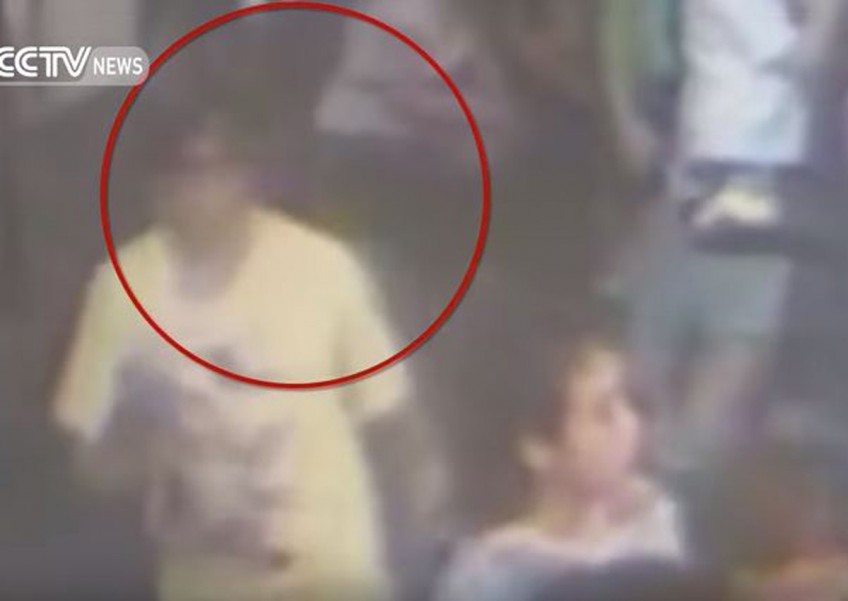Hunt for Bangkok bomber - what we know so far

BANGKOK - Thai police are searching for a man they believe left a backpack bomb at a Bangkok religious shrine in a devastating attack that killed 20 people and has left the city reeling.
No arrests have been made and investigators are scrambling to work out where the suspected bomber has disappeared to - and whether he, or any accomplices, might strike again.
Here is what we know about the investigation: - What do we know about the suspected bomber?
Other than the grainy CCTV footage released by police, very little.
He is believed to be young. In the footage he was seen wearing a baggy yellow T-shirt and shorts as well as sweat bands on both wrists.
He was carrying a heavy rucksack on both shoulders when he walked casually into the Erawan Shrine in Bangkok's Chidlom shopping district on Monday evening.
He sat on a bench close to some iron railings that surround the shrine, which sits on a busy traffic intersection, deposited the rucksack under a bench and left.
Three minutes later a bomb exploded in that exact spot.
- What do we know about the device?
Thai police say the bomb was small, powerful and sophisticated. It is believed to have been made of at least three kilograms (six pounds) of high explosive, packed into a tight container. Local media reports said it contained ball bearings to maximise injuries.
Investigators believe the blast was triggered remotely, either by a timer or a mobile phone call.
The blast was strong enough to leave a small crater, bend iron railings and send chunks of concrete flying. The shockwave was felt in offices hundreds of metres (yards) from the shrine.
- Was there a second bomb and was it linked?
On Tuesday, shortly after 1:00 pm, one or more people threw an explosive device from a bridge into a canal near the busy Saphan Taksin Skytrain station. A large plume of water shot into the air, sending commuters scurrying but no one was harmed.
Police are working on the assumption that both bombings are linked.
Colonel Kamthorn Ouicharoen, head of Bangkok's bomb squad, told reporters both devices were "exactly the same". Officers plan to return to the canal later on Wednesday afternoon to collect more evidence when the tide is low.
- Is the bomber acting alone?
Thai police say the bomber seen on Monday night must have had accomplices, both to build the devices and plan the attack.
"I am convinced that perpetrator (in the first bombing) did not act alone," national police chief General Somyot Poompanmuong told reporters late Tuesday "There must be a supporter and it's likely a Thai," he added.
- Who are the victims?
A mixture of locals and foreigners, most of whom were praying at the shrine. Visitors from places like Malaysia, China, Hong Kong and Singapore have been hit disproportionately hard because the Erawan is especially popular with ethnic Chinese devotees, despite being nominally Hindu.
The latest breakdown by Thai police says three Chinese, two Hong Kongers, an Indonesian, four Malaysians, one Singaporean and six Thais have been confirmed killed. One of the Hong Kong victims was a British passport holder, while Chinese state media have reported that at least four mainland nationals have been killed.
A patient list obtained by AFP shows the vast majority of the more than 120 wounded are either Thai or people with ethnically Chinese names from countries across Asia.
A junta spokesman Wednesday said 55 patients have been released from hospital, while 68 are still being treated.
- Who are the likely perpetrators?
With no claims of responsibility, authorities and experts appear baffled as to who carried it out.
Analysts say it is unlikely Thailand's competing armed political factions are behind a blast of Monday's scale with little to gain but opprobrium from the Thai public.
Likewise there are no indications Muslim rebels in the Thai south have suddenly taken their fight for greater autonomy beyond the so-called Deep South.
Thai authorities say they are keeping an open mind on the motive.
The attack on the shrine itself, in a nation where spirituality and respect for faith is assumed, has also baffled experts.
The shrine's popularity with Chinese origin visitors - and the fact that the second attack took place near Bangkok's Chinatown - has led to speculation the blast may have specifically targeted that demographic.